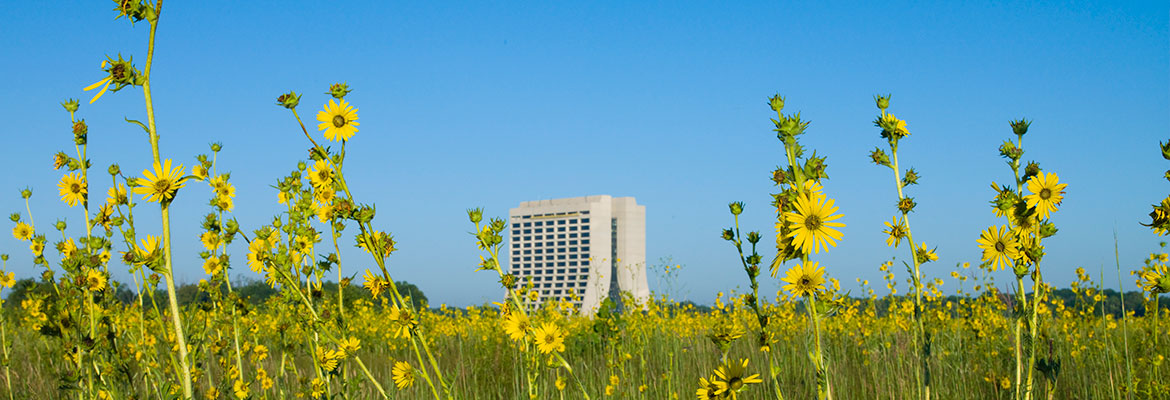From ospreys and green snakes to bats and bumblebees, Fermilab has a role to play in wildlife conservation and management.

Rare species of insects, for example the dion skipper (Euphyes dion), pictured, may find refuge in remnant parcels. Connecting isolated remnants to larger, suitable habitats is critical to any ecological restoration program. Photo credit: T. Peterson
Wildlife at Fermilab constitute several consumer levels in an ecosystem and reflect the quality of various plant communities. For example, species diversity at the producer (plant) level has a major influence on diversity at higher trophic levels. A functional component of biodiversity, wildlife must be managed with the most current understanding of the value and role these species contribute to site ecosystems.
While it is certainly the goal to keep common species common, adaptive management for species of conservation concern is necessary, taking part in regional, national, and international efforts. From ospreys and green snakes to bats and bumblebees, Fermilab has a role to play in wildlife conservation and management. Formal surveys, intensive monitoring, and assisted migration are key strategies that can be employed. Wildlife are an important response variable to the ecological restoration program at Fermilab. Recovery of rare species, sustained populations, and high levels of wildlife diversity reflect a successful approach to this aspect of environmental protection.
- Understanding the Importance of Insects
- Birds
- Reptiles and Amphibians
- Mammals
- Fishes and Aquatic Wildlife

